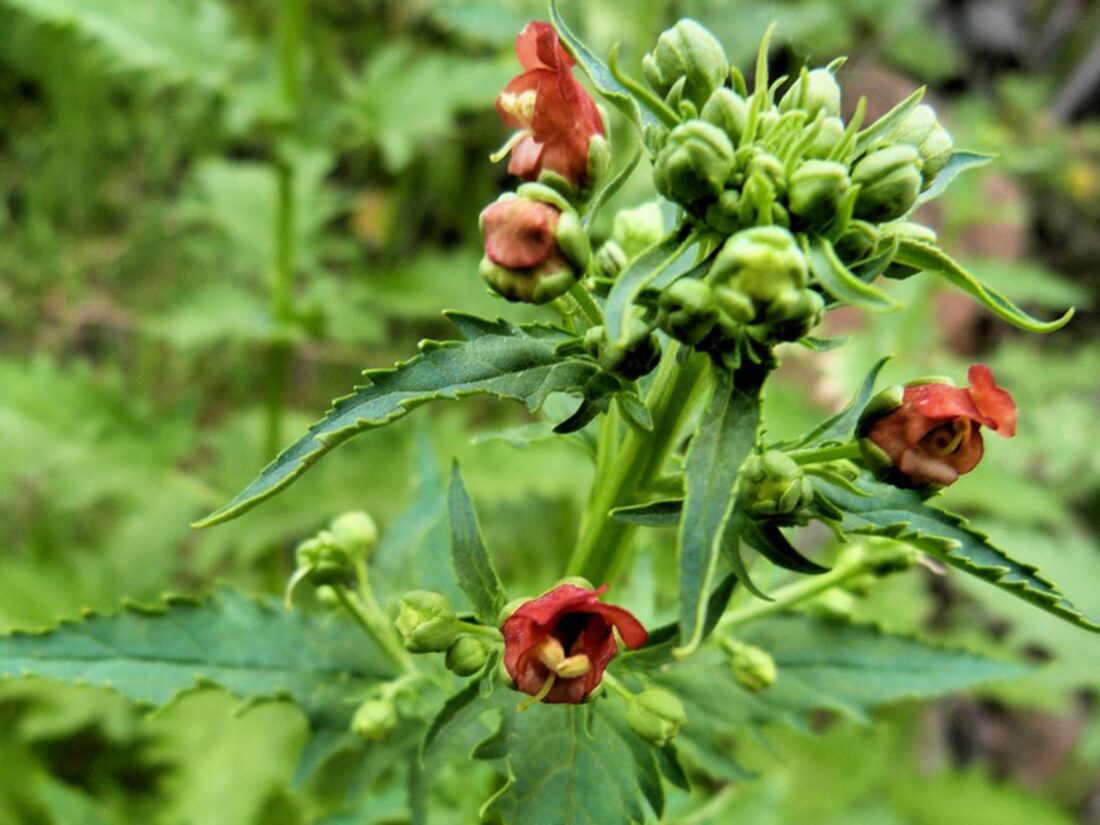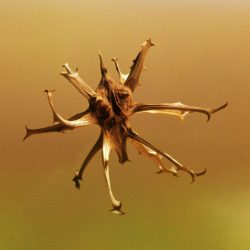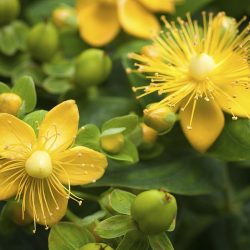Perfectly ignored in Antiquity and the Middle Ages, Figwort made its timid beginnings in the 16th century, spotted by Jérôme Bock and Léonard Fuchs as a remedy for hemorrhoids, vulneraries and more specifically for skin diseases. This may pass for anecdotal, but behind the strange name of these plants hides a part of the medical history of Europe , which has been going on for much longer than the date on which it was decided to call on it as as therapeutic material .
A little history
Let us therefore begin our discussion with the etymological bases laid down by Paul-Victor Fournier in his Dictionary: “Their name is formed from the Latin scrofulae = scrofulae. »
But, first of all, what are these scrofula, alias scrofula, which are also referred to by the disturbing nickname of cold abscess? Scrofula are sores that result from the opening of an abscess located in the neck, more precisely on the lymph nodes , after these have been infected by the bacillus of Koch responsible for pulmonary tuberculosis .
Before that, we were lost for a long time in conjecture on what scrofula really was, finally, when we really had to deal with it, since the medical term scrofula, a real catch-all, refers so much to scrofulous affections strictly speaking than to affections confused with them. Thus one could say of a non-scroful patient that he had scrofula, a terminology as hackneyed as the words leprosy and plague, responding to everything and anything, and therefore not favoring the clear and distinct representation of the disease. and hence its remediation.
If figwort, at least the so-called nodosa, finds itself on the ban of the anti-scrofulous arsenal , there is a perfect explanation for this: “These skin lesions which form in the lymph nodes infected by tuberculosis are large, well demarcated and firm on palpation. They resemble the root of figwort and, according to the signature theory, it was considered to be the appropriate remedy to cure scrofula”.
What are the main pharmacological properties of Figwort aerial parts?
Anti-inflammatory and analgesic properties:
The compounds responsible for this activity are mainly the iridoids, including harpagoside , the active principle which has been the most studied, given its presence in Harpagophytum procumbens . It has been shown that the concentration of harpagoside in the used parts of the two plants is similar .
In vitro , harpagoside interferes in the signaling pathway of a transcription factor, nuclear factor kappa B (NF-kB). In addition, it has been shown that aucubin , present only in Figwort and not in Harpagophytum , exerts the same effects.
The anti-inflammatory mode of action of these two iridoids has been well identified. Both harpagoside on the one hand, and aucubin , a specific compound of Figwort, on the other hand, prevent the phosphorylation and degradation of the inhibitory subunit IKB-α. They block the translocation of the p65 subunit of NF-kB into the nuclear compartment.
This mechanism induces inhibition of mRNA expression, strong inhibition of protein synthesis of tumor necrosis factor alpha (TNF-α) and interleukin (IL6), which are pro-inflammatory cytokines, as well as than cyclooxygenase 2 (COX-2) and inducible NO synthase (iNOS), which causes a suppression of the synthesis of prostaglandins type 2 (PGE2) and nitric oxide (= nitric oxide = NO), main mediators of inflammation.
In fact, figwort is used in the same inflammatory rheumatic pathologies as harpagophytum , while benefiting from a more powerful pharmacological action .
Antioxidant properties:
Figwort (especially in the form of a very fine powder) provides splenic cells exposed to H2O2 with significant protection against oxidative stress , characterized by a decrease in the formation of reactive oxygen species (= species) as well as the level of malondialdehyde (MDA), and by an increase in the activity of glutathione peroxidase (GPx).
Other properties:
- Antispasmodic
- Dermatological (Effect on wound healing – Action in psoriasis)
- Hepatoprotective
- Antimicrobial
Are there any precautions for use concerning Figwort?
Contraindications:
- Figwort is not recommended for pregnant or breastfeeding women, or for children under 12 years old.
- Figwort is a very poisonous plant for animals.
Side effects :
- Figwort can cause nausea and vomiting in high doses.
- An acceleration of transit or diarrhea is possible at high doses or in sensitive subjects, in relation to the presence of anthraquinone glycosides.
Precautions for use:
- Figwort is not recommended in case of progressive peptic ulcer, or severe heart failure.
Drugs interactions :
- Figwort can interact with warfarin, which requires medical monitoring, with INR measurement after starting and after stopping the administration of the plant.
- It may also interact with antiarrhythmic drugs; due to the presence of traces of cardiac glycosides, which also requires medical monitoring in the event of an association.
How to take Figwort and at what dosage?
Liquid form:
- Fluid extract of standardized fresh plant , main galenic form available for this plant: 5 to 10 ml per day in a glass of water.
Medical bibliographic sources and clinical trials :
- Stevenson PC, Simmonds MS, Sampson J, Houghton PJ, Grice P. Wound healing activity ofacylated iridoid glycosides from Scrophularia nodosa. Phytother Res. 2002
- Ahmad M, Muhammad N, Mehjabeen, Jahan N, Ahmad M, Obaidullah, Qureshi M, Jan SU. Spasmolytic effects of Scrophularia nodosa extract on isolated rabbit intestine. Pak J Pharm Sci. 2012
- Pasdaran A, Hamedi A. The genus Scrophularia: a source of iridoids and terpenoids with a diverse biological activity. Pharm Biol. 2017
- Sesterhenn, K., Distl, M., & Wink, M. (2007). Occurrence of iridoid glycosides in in vitro cultures and intact plants of Scrophularia nodosa L. Plant cell reports
- Huang T.H. et al., Harpagoside suppresses lipopolysaccharide-induced iNOS and COX-2 expression through inhibition of NF-kappa B Activation, J Ethnopharmacol., 2006
- Jeong H.J. et al., Inhibition of TNF-alpha and IL-6 production by aucubin through blockage of NF-kappaB activation RBL-2H3 mast cells; Cytokine, 2002
- Tasdemir D. et al. Evaluation of antiprotozoal and antimycobacterial activities of the resin glycosides and the other metabolites of Scrophularia cryptophila; Phytomedicine, 2008
- Graeme T. et al., The Western Herbal Tradition : 2000 years of medicinal plant knowledge, Churchill Linvingstone Elsevier, 2010





